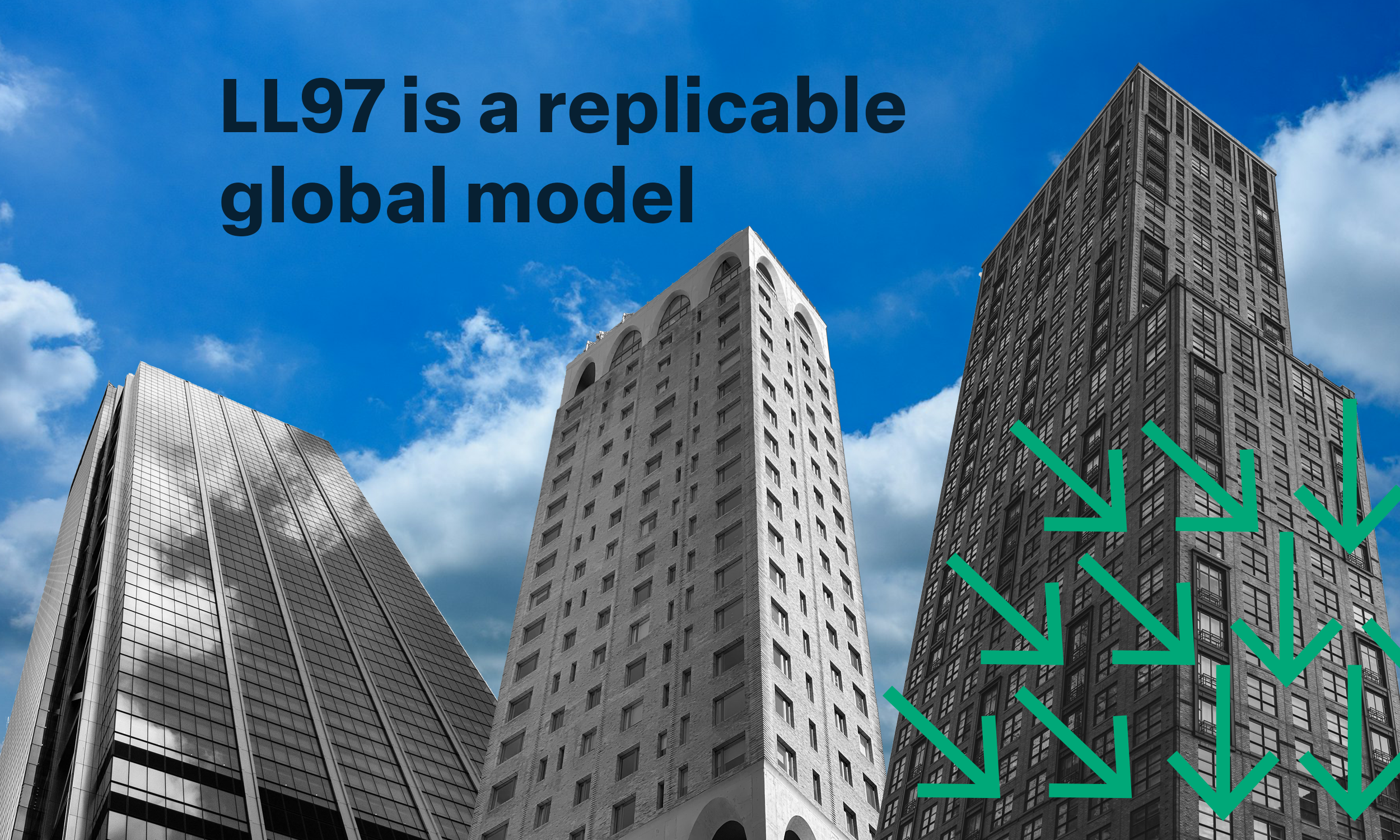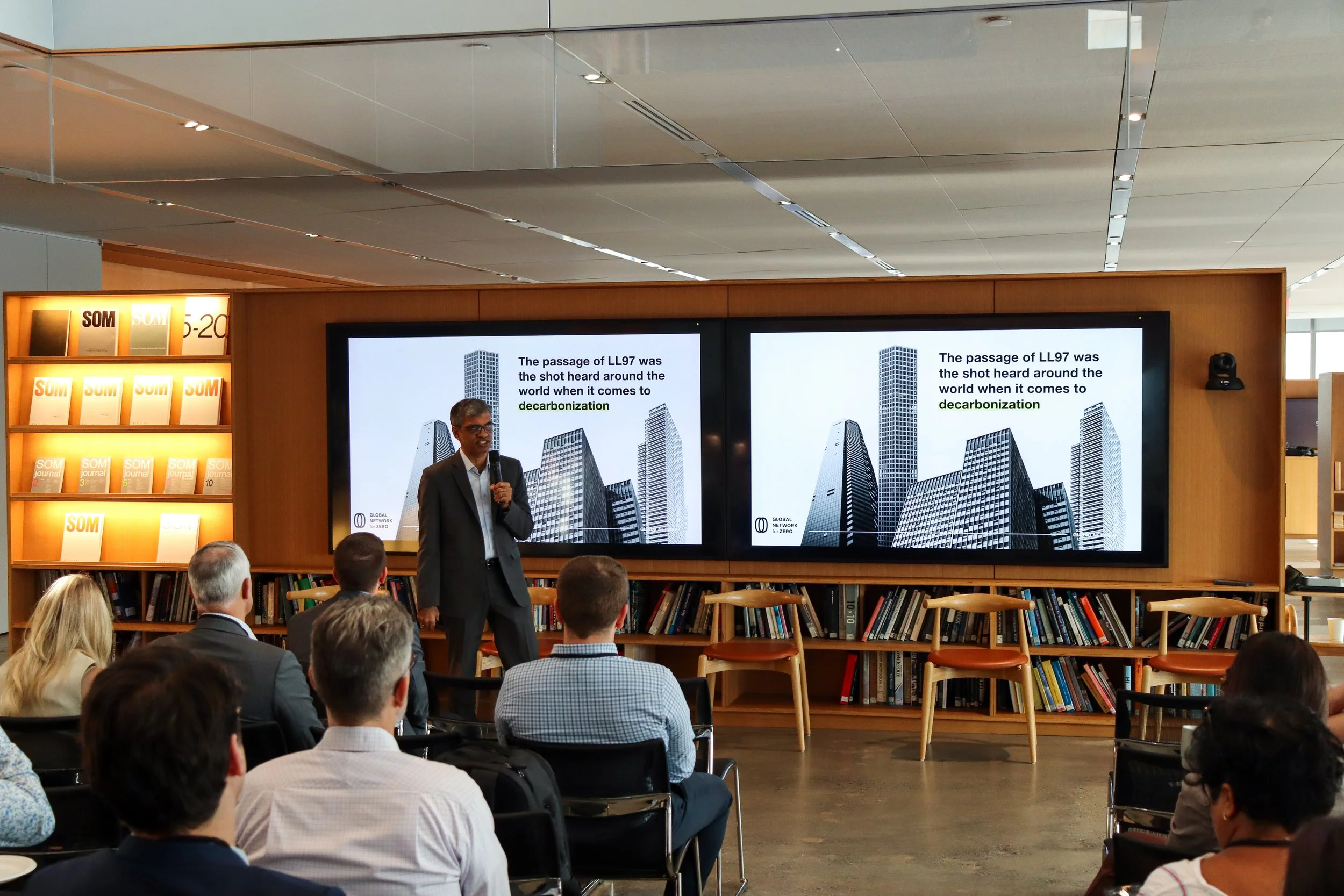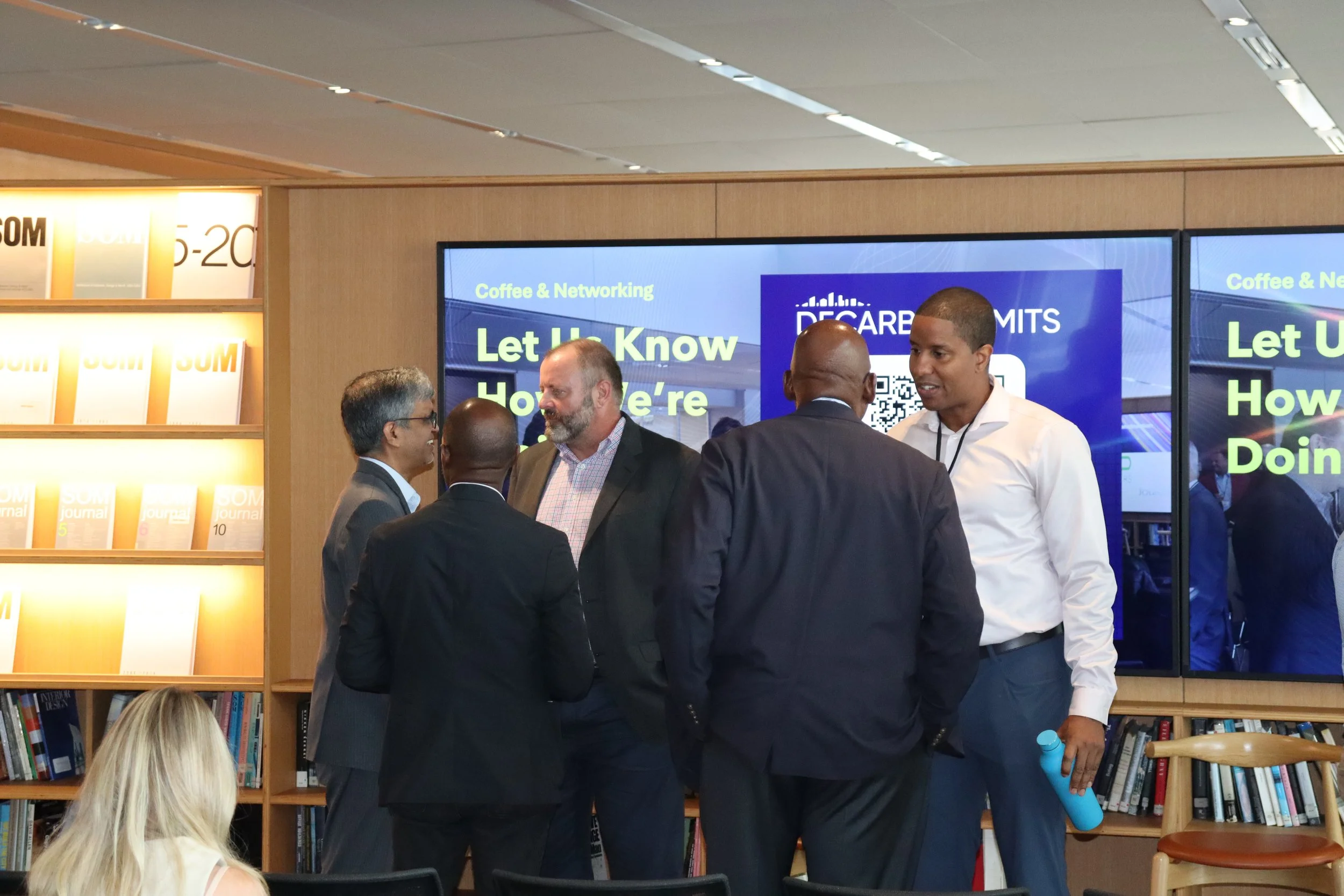Dispatches in Decarbonization: How NYC’s LL97 is Shaping Global Decarbonization
This article first appeared in Mahesh Ramanujam’s monthly LinkedIn newsletter, Dispatches in Decarbonization, on August 20, 2025. Subscribe on LinkedIn to receive these updates.
Earlier this month, I had the privilege of opening the Decarb Summits's NY – New Construction & Grid Resiliency event, which focused on NYC’s Local Law 97 (LL97) and how new construction projects can align with the city’s carbon mandates while also increasing value and performance. NYC has long been a proving ground for bold policy, resilient infrastructure, and forward-looking climate action. What happens in NYC doesn’t stay there – it influences cities and markets worldwide.
As President and CEO of the Global Network for Zero and in my previous role leading the U.S. Green Building Council and expanding LEED’s global reach, I’ve had the opportunity to see firsthand how policy, innovation, and collective leadership can transform entire industries. Today, those lessons are urgently relevant as cities like NYC move from ambition to action in their climate commitments. The message I shared in New York is simple but urgent: the future of net zero is already here, and how we respond today will determine the resilience and prosperity of our communities tomorrow.
LL97: A Replicable Global Model
The passage of LL97 in 2019 was a shot heard around the world when it comes to building decarbonization. It requires most buildings over 25,000 square feet to meet new GHG emissions limits beginning in 2024, with stricter limits coming into effect in 2030. The goal is to reduce the emissions produced by NYC’s largest buildings by 40% by 2030 and to net zero by 2050. Initially controversial, early results have been positive and a symbol for other cities on how implementing bold policy can translate into tangible climate progress. Compliance rates have been faster than expected, with many buildings moving quickly to meet requirements. Only 30% of buildings are projected to be non-compliant in 2029.
Learn more about Building Performance Standards across the U.S. →
But the challenge is far from over. When the second reporting period begins in 2030, as much as 70% of New York’s buildings could be out of compliance if they don’t take significant action.
This is where leadership matters. Cities that serve as global financial and cultural capitals — like NYC — set precedents. LL97 shows other cities that every building has a pathway to zero emissions, and that strong enforcement paired with strategic incentives can close the compliance gap.
The work ahead is not just about buildings; it is about scaling global standards, recognizing our interconnectedness, and moving forward collaboratively to address evolving certification requirements.
Beyond Buildings: The Grid Challenge
Buildings are only part of the equation. LL97 does not regulate one of the largest contributors to emissions: the electrical grid itself. And here lies one of New York’s greatest challenges — and opportunities.
NYC consumes about 142.5 gigawatt hours of electricity every day — enough to power an average U.S. hospital for nearly two decades. Yet the city’s grid was not built to handle today’s dynamic, distributed energy demands.
As more buildings electrify to meet LL97, utilities and regulators must align with the city’s climate goals. This requires a new grid model that prioritizes:
Zero-emissions electricity from hydro, solar, and wind
New transmission lines like the Champlain Hudson Power Express and Clean Path New York
Battery storage for resilience during outages
Smart grids with bidirectional flow and demand response
Community-scale systems that distribute power more efficiently and equitably
Grid modernization isn’t a nice-to-have; it is essential for achieving compliance and long-term decarbonization.
Making Certification Work
As the regulatory landscape evolves, certification programs must also adapt. We need to move away from chasing points and instead help projects meet compliance. We need to help them identify the strategies that address decarbonization across energy, water, waste, and emissions in the most efficient and affordable ways possible. Being too overly holistic or prescriptive won’t work in the era of building performance standards.
Instead, certification programs must:
Stay laser focused on zeroing out emissions directly
Offer the most cost-effective and ROI-driven strategies
Simplify compliance for owners who are hesitant or under-resourced
At GNFZ, we are building certification systems that do just that. We focus on science-based, data-driven roadmaps that meet organizations where they are and guide them toward measurable, financially viable decarbonization.
Pathways to Action
For building owners wondering where to start, the answer is clear: begin with an emissions assessment and energy audit aligned with the GHG Protocol. From there, establish emission reduction goals and develop an incremental retrofit plan that targets hotspots, outlines high-impact energy efficiency upgrades, and prioritizes measures that offer the greatest impact while delivering an ROI.
Key strategies this plan should include are:
Energy efficiency upgrades across building envelope, HVAC systems, lighting, water efficiency, landscape, pumps and motors, plug loads, waste management, renewable energy supplementation, and whole building
Renewable energy via solar panels, wind turbines, or battery storage to reduce reliance on grid electricity and lower emissions
Purchase Renewable Energy Certificates (RECs) associated with clean energy sources within or flowing into the city to offset electricity emissions
Utilize beneficial electrification, replacing fossil fuel heating, cooling and hot water systems with efficient electric equipment to earn credits under the law
Implement smart operation and maintenance strategies and engage building occupants to maximize efficiency
Leverage financial incentives such as PACE financing, NYSERDA grants, or other state or local rebates
Establishing accurate reporting frameworks with tools like NYC’s Building Energy Analysis Manager (BEAM)
This mix of practical steps and financial levers is what will bring reluctant owners into compliance — and build confidence that decarbonization is achievable.
Learn more with GNFZ's Energy Efficiency Strategies for Existing Buildings Guide →
The Role of Emerging Technologies
The good news is that new technologies are helping accelerate progress. They not only cut energy use and emissions but also enable real-time measurement and optimization.
Examples include:
AI-driven energy management systems that use machine learning to optimize HVAC, lighting, and equipment in real time, and which can predict peak demand and adjust loads
Advanced heat pumps capable of performing even in cold climates and variable refrigerant flow systems
Solar PV paired with next-generation batteries such as lithium-ion or emerging solid-state storage
Microgrid-ready systems that can island during outages
Grid-interactive efficient buildings that respond dynamically to grid conditions
Next-generation building envelope technologies that tint dynamically to reduce cooling loads
Dynamic façades for deep energy retrofits that reduce tenant disruption while upgrading performance
Sensors and IoT platforms that measure operational carbon intensity hour-by-hour and digital twins to model and test retrofit scenarios before investing
Together, these tools create a new generation of grid-interactive efficient buildings, capable not only of reducing their own emissions but of actively supporting the resilience of the larger grid.
Leading Through Data and Accountability
The next generation of certification is about integration and accountability. Real-time emissions tracking, operational carbon intensity metrics, and alignment with ESG frameworks are no longer optional — they are expectations from regulators, investors, and the market alike.
At GNFZ, we provide clear, trusted pathways to net zero. We help organizations move beyond compliance into leadership, ensuring that decarbonization becomes a driver of value, not just an obligation.
A Call to Action
NYC is emerging as a resilient model for climate action. If we engage building owners, investors, and utilities with both the carrot and the stick, I believe near-full compliance by 2029 is achievable. That would position the city strongly for the more stringent requirements of 2030 and beyond.
The work will not be easy. But history shows that when bold policy, innovative technology, and committed leadership align, transformation is possible.
What’s happening in New York today matters for the rest of the world tomorrow. The lessons learned there— about policy, compliance, grid modernization, and innovation — can be applied in every city striving for resilience and net zero.
As always, thank you for reading Dispatches in Decarbonization. I look forward to continuing this dialogue with you — and to highlighting more examples of leadership that move us closer to a sustainable, equitable, and zero-emissions future.





